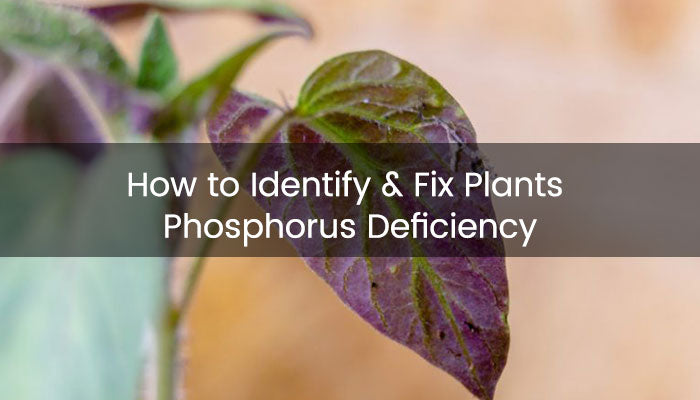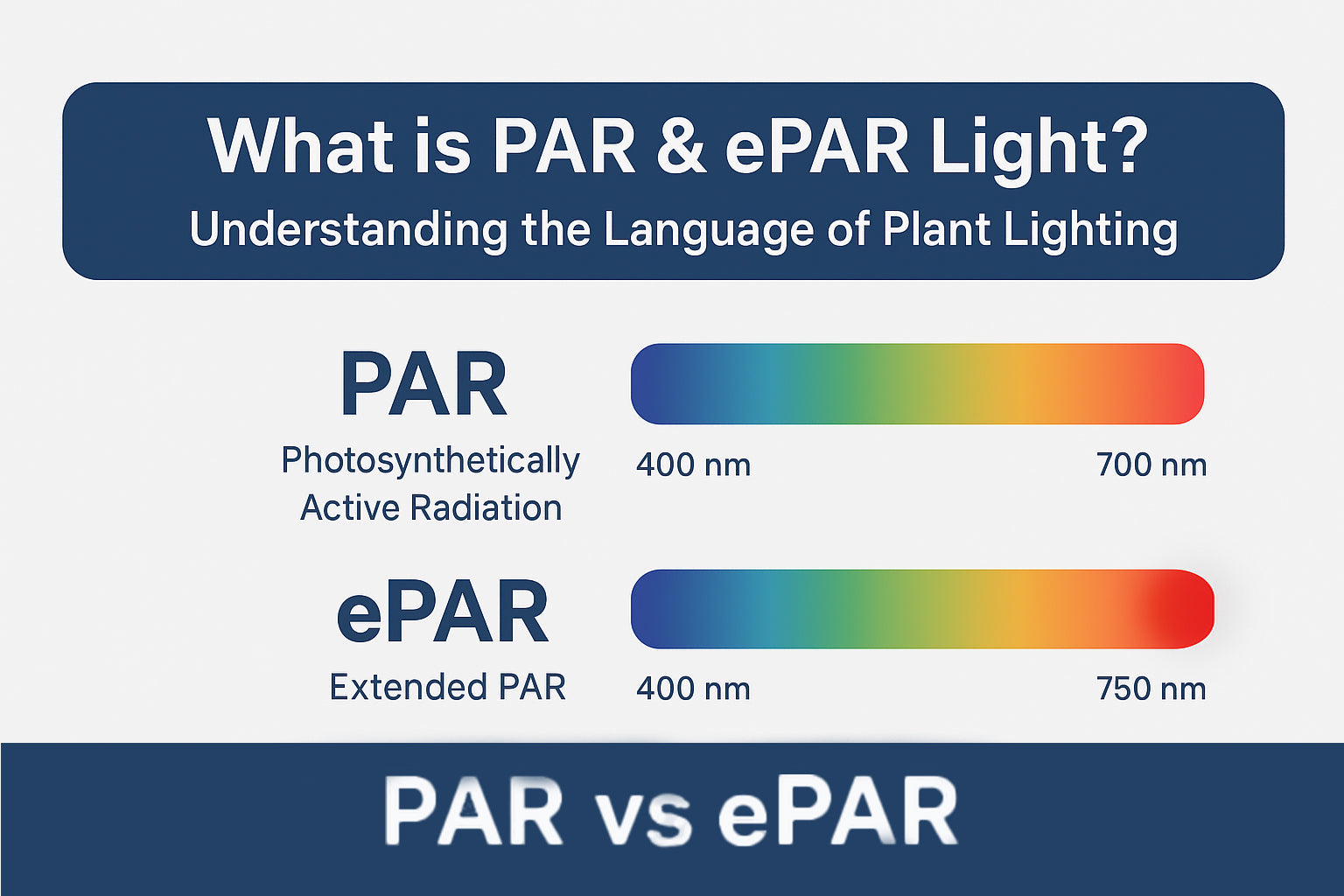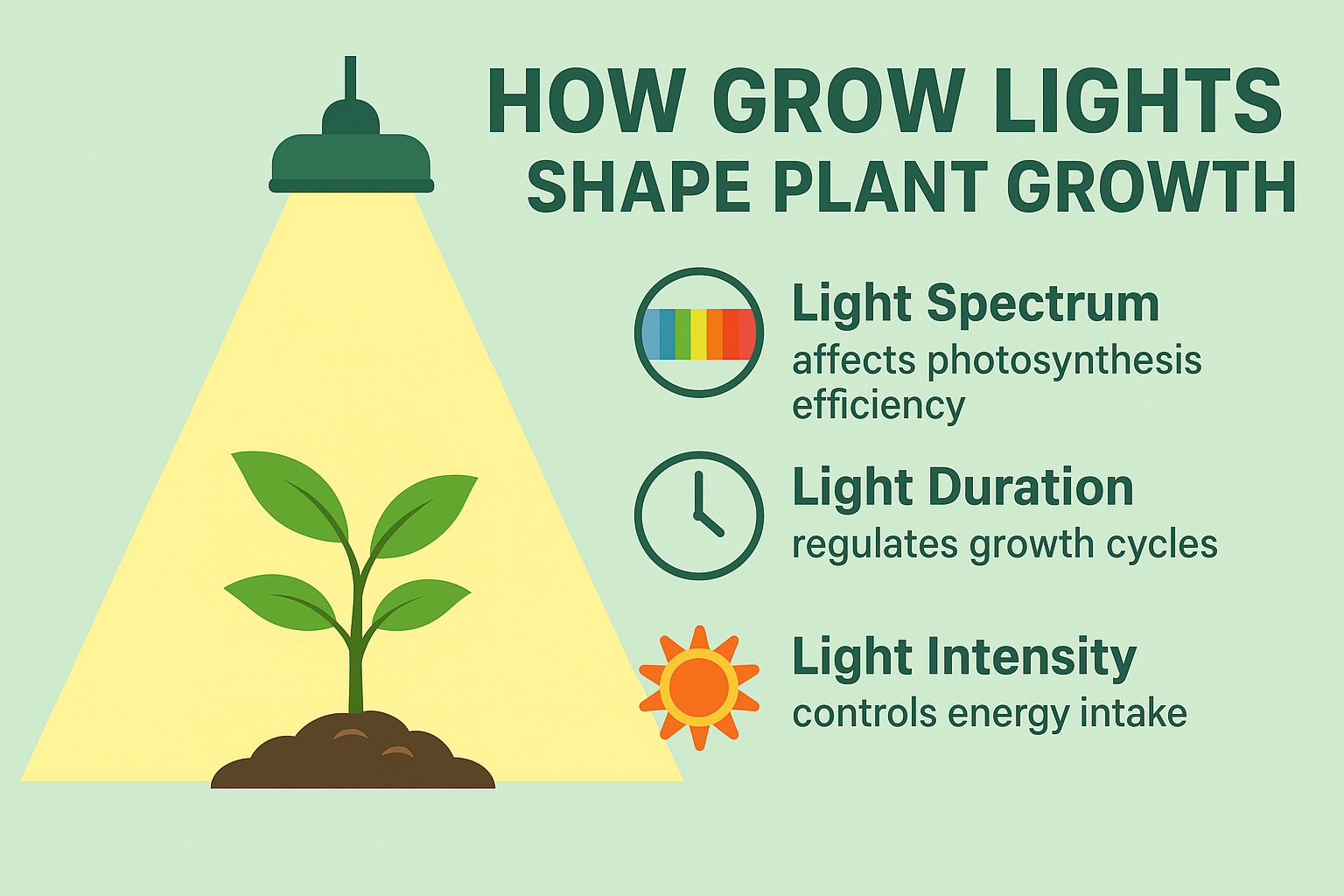
How to Identify & Fix Plants Phosphorus Deficiency
Green herb requires a balanced supply of 12 nutrients to ensure healthy growth from germination to harvest. Among them, phosphorus plays a crucial role in supporting root development, as well as flower and fruit formation.
When green herb lacks phosphorus, growth slows down, leading to weak roots that hinder nutrient absorption. The leaves and stems may change color (dark green or purple), develop brown spots, curl, and eventually fall off, resulting in reduced yields.
But don't worry, in this guide, we’ll reveal the symptoms of phosphorus deficiency in green herb plants, provide reference images, and offer simple yet effective methods to treat and prevent phosphorus deficiency in your plants.
Main Content:
- 1. Why Is Phosphorus in Green Herb Important
- 2. How to Identify Phosphorus Deficiency in Green Herb
- 3. What Causes Green Herb P Deficiency
- 4. How to Fix P Deficiency in Green Herb
- 5. How to Prevent Phosphorus Deficiency in Green Herb
- 6. Conclusion
- 7. FAQs about Green Herb Phosphorus Deficiency
Why Is Phosphorus in Green Herb Important
Phosphorus is a crucial nutrient for green herbs, playing a vital role in root development, energy transfer, and overall plant health. During the flowering stage, phosphorus becomes even more essential as it promotes flower growth and increases yields.
What Do Green Herb Plants Use Phosphorus For
Phosphorus plays various roles throughout the different stages of green herb growth, including early cloning, seed formation, the vegetative stage, and the flowering stage.
- Root Development: Healthy roots are the foundation for water and nutrient absorption. Adequate phosphorus strengthens root vitality and enhances nutrient uptake.
- Photosynthesis: Phosphorus is essential for forming adenosine triphosphate (ATP), a key molecule in energy transfer during photosynthesis.
- Cell Division: Phosphorus is a critical component of DNA and RNA, and sufficient phosphorus promotes early plant development and rapid growth.
- High-Quality Flowers: Phosphorus can promote branch growth and form more flower sites, leading to higher yields and better-quality flowers.
The Role of Phosphorus in Different Green Herb Plant Stages
Results from North Carolina State University demonstrated that during different life stages (vegetative, pre-flowering, flowering), phosphorus concentrations significantly impact green herb sativa growth, development, and yield.
This study revealed the role of phosphorus during different growth stages:
Vegetative Stage
green herb plant heights increased as P fertility increased. In the vegetative state, an increase in P fertility will increase plant height linearly until the 11.25 mg·L−1 threshold.
Flowering Stage
After 8 weeks of green herb growth, plants at the higher P concentrations (22.5 and 30.0 mg·L−1) were more vigorously branched and had more nodes per branching structure resulting in greater floral biomass per plant.
This shows that within a certain range, higher phosphorus levels can lead to greater yields. Additionally, the study indicated that phosphorus fertility has a significant impact on cannabinoid synthesis, increasing THC and CBD levels in green herbs.
On the other hand, green herb phosphorus deficiency can stunt growth, weaken roots, and cause leaves to turn dark green or purple, leading to reduced yields. Therefore, ensuring adequate phosphorus supply is critical to maximizing the growth and yields of green herb plants.
How to Identify Phosphorus Deficiency in Green Herb
green herb phosphorus deficiency early symptoms include slowed growth and leaves turning dark green, blue-green, or purple. Stems and petioles develop a purplish or reddish hue. As the deficiency progresses, leaves will develop brown or black spots, begin to curl, and eventually wither and drop.
Recognizing a phosphorus deficiency in green herbs isn't difficult, but it needs to be distinguished from other undesirable symptoms. Below I've provided detailed symptoms and corresponding images of phosphorus deficiency in green herbs for your reference.
Smaller Plants
green herbs grown under phosphorus deficiency are typically smaller than those with higher P rates. They have fewer leaves and tend to be chlorotic (yellowing of the leaves).
Additionally, the green herb inflorescence appeared less dense, and the individual flowers within the inflorescence appeared smaller.
Slower Growth
Phosphorus deficiency slows the overall growth rate of green herb plants, primarily because phosphorus is vital for root growth and development. Underdeveloped roots become weaker, limiting the plant's ability to absorb water and essential nutrients.
Leaf Discoloration
When there is phosphorus deficiency in green herbs, the early sign is older turning dark green, blue-green, or even purple. The discoloration usually begins at the edges and spreads inward. If left unaddressed, this discoloration can progress from older leaves to newer ones.
Purple Stems and Petioles
Phosphorus deficiency in green herbs can cause the stems and petioles to develop a purplish or reddish hue. While some green herb strains naturally exhibit this trait, it often signals a green herb P deficiency when accompanied by other deficiency symptoms.

Brown or Black Spots
In the later stages of green herb P deficiency, dark brown or black spots will appear on the leaves, usually starting on the lower or older leaves.
These spots are typically a sign of tissue necrosis (cell death), indicating that the deficiency is becoming more severe and should be prevented early on.
Leaf Curling and Dryness
green herb leaves affected by phosphorus deficiency may start to curl upwards or downwards along the edges and feel dry and brittle to the touch. As the deficiency progresses, the leaves may become more curled and fragile.
Leaf Drop
green herb leaves severely affected by phosphorus deficiency may begin to fall off, particularly older and lower leaves. Leaf drop reduces the plant’s photosynthetic capacity, further weakening the plant and impairing its ability to grow and flower.
By comparing these common phosphorus deficiency symptoms with your green herb plants, you can determine if a deficiency is present and take corrective action as early as possible.
What Causes Green Herb P Deficiency
Phosphorus (P) deficiency in green herbs can be caused by several factors, often related to growing conditions and nutrient management:
- Improper pH Levels: The most common cause is pH imbalance. If the soil or growing medium is too acidic or alkaline, phosphorus becomes unavailable to the plant.
- Low Phosphorus in Nutrients: If your nutrient mix lacks sufficient phosphorus, your plant won’t get what it needs, especially during flowering.
- Cold Temperatures: Phosphorus absorption is slowed or blocked in cold environments (below 60°F or 15°C), especially common in outdoor grows.
- Nutrient Lockout: Overfeeding or improper feeding schedules can cause nutrient buildup, leading to a "lockout," where phosphorus and other nutrients become unavailable to the plant.
- Poor Soil Quality: Poor-quality soil or growing medium may lack adequate phosphorus or have poor drainage and compaction, affecting nutrient absorption.
- Root Problems: Damage to roots from overwatering, pests, or diseases can limit phosphorus uptake.
- High Levels of Other Nutrients: Excessive amounts of iron, zinc, or calcium can interfere with phosphorus uptake by competing with it in the nutrient solution or soil.
Addressing these issues will help prevent and fix phosphorus deficiency in green herb plants.

How to Fix P Deficiency in Green Herb
Once your green herb plant is diagnosed with phosphorus deficiency, you can treat it with the following guide symptomatically.
Adjust pH Levels
Adjusting the pH in green herb cultivation is crucial, as improper pH levels can affect nutrient uptake. First, measure the current pH of the soil or hydroponic solution using pH test strips. The ideal range is:
- Soil: 6.0–7.0
- Hydroponics/Soilless: 5.5–6.5
If the pH is too high, add a small amount of pH-lowering solution, white vinegar, or lemon juice to the growing medium and gradually adjust to the ideal range. If too low, add a small amount of baking soda or a pH-raising solution.
Use Phosphorus-Rich Nutrients
If the pH is correct but phosphorus deficiency symptoms persist, you can use phosphorus-rich nutrients to correct the deficiency.
Mineral (synthetic) fertilizers with a higher phosphorus content, such as those with an NPK ratio of 5:7:10 or 6:10:15, can effectively improve phosphorus levels in green herb plants.
Additionally, phosphorus-rich foliar sprays can provide quicker results. For organic growers, bone meal, bat guano, or fish meal can be used to increase phosphorus levels.
These organic sources release nutrients more slowly and can be mixed directly into the soil or growing medium. However, when using synthetic nutrients, dilute the fertilizer to an appropriate concentration to prevent root burn.
Flushing green herb (If Needed)
Sometimes, nutrient lockout occurs when other nutrients are present in excess, preventing phosphorus absorption. If you suspect this is the case, flushing the medium with pH-balanced water may help.
By following these steps, you can fix phosphorus deficiency in green herb plants. Additionally, I’ve provided some preventive measures for you to minimize the risk of P deficiencies in green herbs.
How to Prevent Phosphorus Deficiency in Green Herb
Here are some effective steps to prevent phosphorus deficiency in green herbs:
Monitor Environmental Conditions
Ensure the grow tent or grow room stays warm. Phosphorus uptake slows down in cold conditions, especially below 60°F (15°C). Maintain temperatures in the optimal range for green herbs (around 70-85°F or 20-30°C) to promote healthy nutrient absorption.
Also ensure proper airflow and humidity control with grow tent kits, as high humidity levels can lead to root problems, which may indirectly affect phosphorus uptake.
Read also: Grow Room Temp and Humidity Chart for green herb.
Avoid Nutrient Lockout
Overfeeding certain nutrients like calcium, iron, or zinc can cause a phosphorus lockout, preventing the plant from absorbing it. Therefore, make sure you're using a well-balanced nutrient solution.
If growing in soil or coco, perform a light flush every few weeks with pH-balanced water to prevent nutrient buildup that can lead to lockout.
Ensure Root Health
Phosphorus is absorbed through the roots, so root health is crucial. Avoid overwatering, which can suffocate roots, and use beneficial microbes or mycorrhizae to improve root function and nutrient uptake.
Use LED Grow Lights
Phosphorus deficiency can sometimes be worsened by improper lighting. Ensure your plants receive the right spectrum of light, particularly in the flowering stage, to encourage nutrient uptake and overall plant health.
Medic Grow LED grow lights not only allow you to adjust the spectrum and light intensity but also come with UV lights to help your plants develop strong root systems for better nutrient absorption.
By maintaining a balanced nutrient schedule and optimal environmental conditions, you can prevent phosphorus deficiencies and keep your green herb plants thriving.
Conclusion
Identifying and correcting phosphorus deficiency in green herb plants is key to ensuring healthy growth and high yields. By monitoring pH levels, using phosphorus-rich nutrients, and maintaining optimal environmental conditions, you can prevent or fix phosphorus deficiencies in green herbs.
Related post:
What Causes White Spots on Plant Leaves?
What Does Moldy Green Herb Look Like?
FAQs about Green Herb Phosphorus Deficiency
1. How Do You Fix Phosphorus Deficiency?
To fix phosphorus deficiency in plants, follow these steps:
- Adjust pH Levels between 6.0–7.0 for soil and 5.5–6.5 for hydroponics
- Use Phosphorus-Rich Fertilizers
- Mantain a 70-85°F (20-30°C) temp
- Use beneficial microbes to ensure root health
- Flush plants with pH-balanced water
2. What Is Green Herb Phosphorus Toxicity?
Phosphorus toxicity in green herbs occurs when the plant absorbs excessive amounts of phosphorus, leading to a nutrient lockout, and preventing the absorption of other vital nutrients. This can result in yellowing leaves, leaf burn, stunted growth, and leaf curling or cupping.
To treat phosphorus toxicity, flush the growing medium with pH-balanced water to remove the excess nutrients.
3. What Is a Good Source of Phosphorus for Green Herbs?
Organic sources like bone meal, bat guano, and fish meal are good sources of phosphorus for green herbs. These organic sources provide a slow, steady release of phosphorus, making them suitable for long-term soil health.
Featured Products
Blog Posts
Contact Us with Any Idea!
- Choosing a selection results in a full page refresh.
!
































